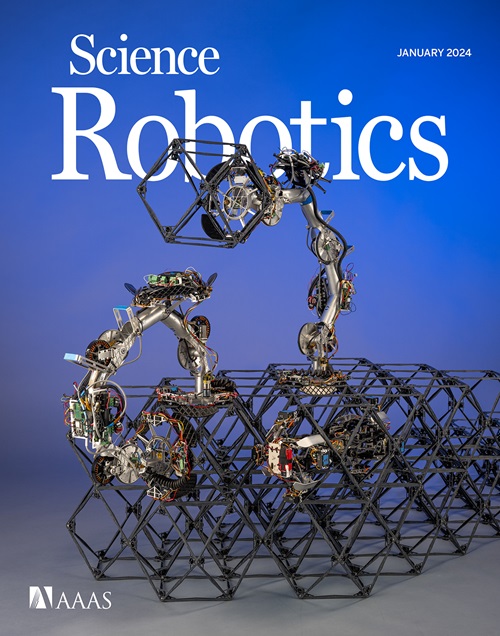SRT-H:基于语言条件模仿学习的自主手术分层框架
IF 27.5
1区 计算机科学
Q1 ROBOTICS
引用次数: 0
摘要
自主手术的研究主要集中在受控环境下的简单任务自动化。然而,现实世界的外科应用需要长时间的灵巧操作和对人体组织固有变异性的强大泛化。使用现有的基于逻辑或传统的端到端学习策略仍然难以解决这些挑战。为了解决这一差距,我们提出了一个层次结构框架来执行灵巧的、长期的外科手术步骤。我们的方法使用高级策略来规划任务,低级策略来生成低级轨迹。高级规划器在语言空间中进行规划,生成任务级或纠正指令,指导机器人完成长视距步骤,并帮助从低级策略所犯的错误中恢复过来。我们通过胆囊切除术(一种常用的微创手术)的离体实验验证了我们的框架,并进行了消融研究来评估系统的关键组成部分。我们的方法在8个不同的离体胆囊中实现了100%的成功率,完全自主地运行,无需人工干预。分层方法提高了策略从次优状态中恢复的能力,这在现实外科应用的高度动态环境中是不可避免的。这项工作展示了外科手术步骤级的自主性,标志着自主手术系统临床部署的里程碑。本文章由计算机程序翻译,如有差异,请以英文原文为准。
SRT-H: A hierarchical framework for autonomous surgery via language-conditioned imitation learning
Research on autonomous surgery has largely focused on simple task automation in controlled environments. However, real-world surgical applications demand dexterous manipulation over extended durations and robust generalization to the inherent variability of human tissue. These challenges remain difficult to address using existing logic-based or conventional end-to-end learning strategies. To address this gap, we propose a hierarchical framework for performing dexterous, long-horizon surgical steps. Our approach uses a high-level policy for task planning and a low-level policy for generating low-level trajectories. The high-level planner plans in language space, generating task-level or corrective instructions that guide the robot through the long-horizon steps and help recover from errors made by the low-level policy. We validated our framework through ex vivo experiments on cholecystectomy, a commonly practiced minimally invasive procedure, and conducted ablation studies to evaluate key components of the system. Our method achieves a 100% success rate across eight different ex vivo gallbladders, operating fully autonomously without human intervention. The hierarchical approach improved the policy’s ability to recover from suboptimal states that are inevitable in the highly dynamic environment of realistic surgical applications. This work demonstrates step-level autonomy in a surgical procedure, marking a milestone toward clinical deployment of autonomous surgical systems.
求助全文
通过发布文献求助,成功后即可免费获取论文全文。
去求助
来源期刊

Science Robotics
Mathematics-Control and Optimization
CiteScore
30.60
自引率
2.80%
发文量
83
期刊介绍:
Science Robotics publishes original, peer-reviewed, science- or engineering-based research articles that advance the field of robotics. The journal also features editor-commissioned Reviews. An international team of academic editors holds Science Robotics articles to the same high-quality standard that is the hallmark of the Science family of journals.
Sub-topics include: actuators, advanced materials, artificial Intelligence, autonomous vehicles, bio-inspired design, exoskeletons, fabrication, field robotics, human-robot interaction, humanoids, industrial robotics, kinematics, machine learning, material science, medical technology, motion planning and control, micro- and nano-robotics, multi-robot control, sensors, service robotics, social and ethical issues, soft robotics, and space, planetary and undersea exploration.
 求助内容:
求助内容: 应助结果提醒方式:
应助结果提醒方式:


